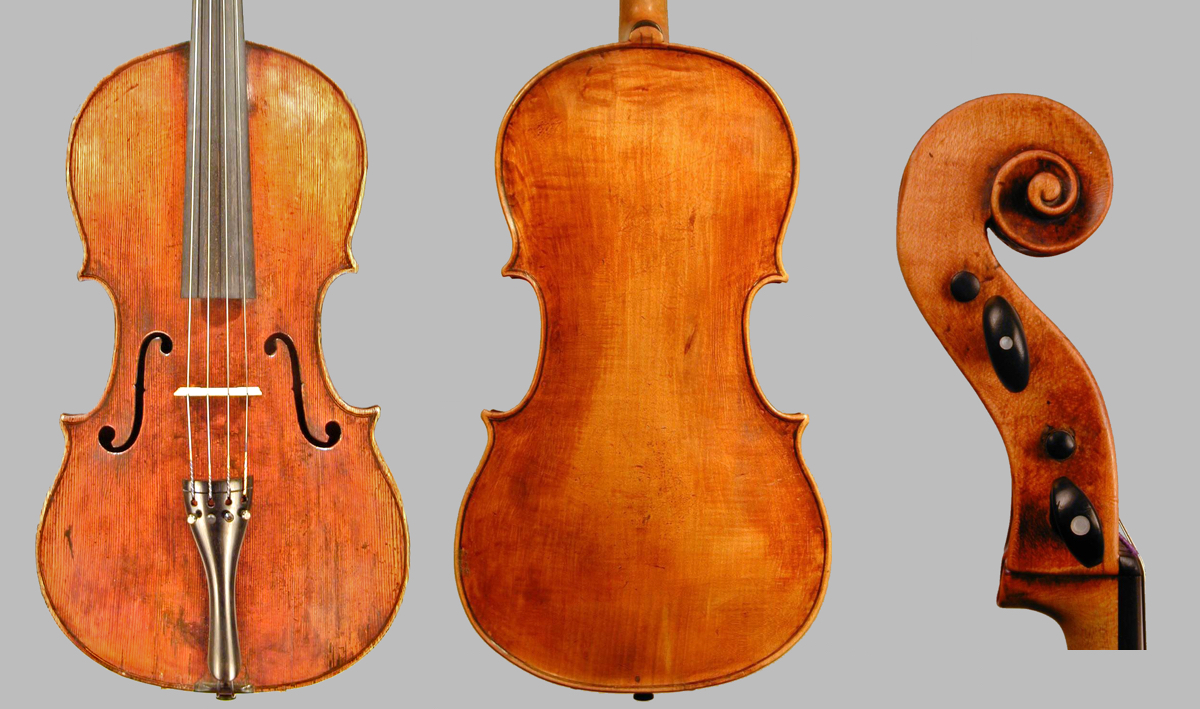The earliest-known instruments of the violin family made in Milan date from the second half of the 1600s, relatively late by comparison with other Italian violin making centers. In nearby Brescia, Gasparo had been dead for 50 years and Maggini for 30, while in Cremona the Amati workshop had been operating for a century and was quickly coming to an end, faced with the competition of the Guarneris, Rugeris and Stradivari.
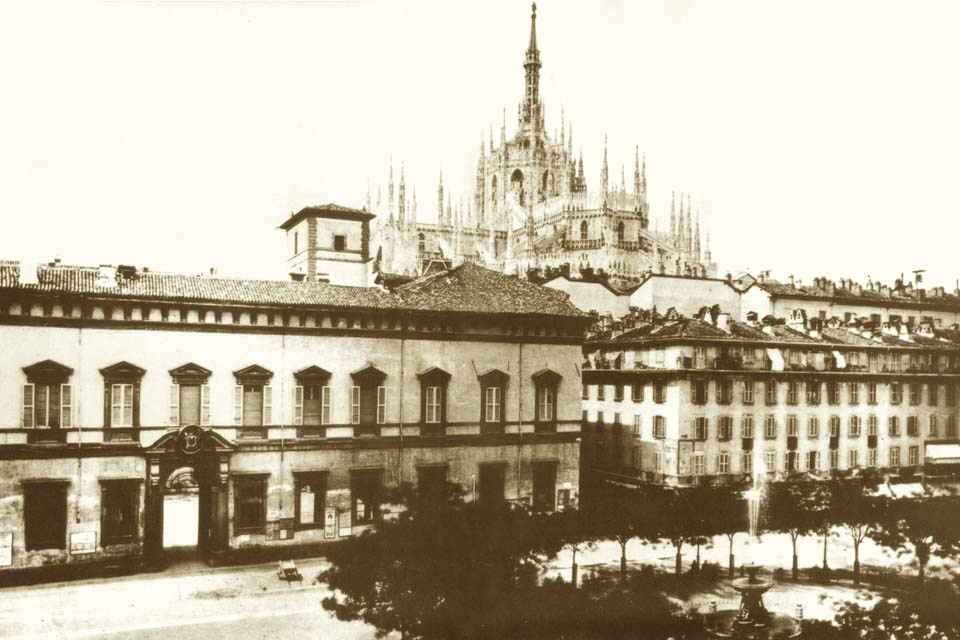
A early 20th-century view of the piazza at the end of Contrada Larga, where the Grancinos had their house and workshop. On the left is the Archbishop of Milan’s house, with Milan cathedral close behind. Photo: courtesy Carlo Chiesa
Very few violins made in Milan during this period still bear their original labels, so it is difficult to understand the history of their makers. However, it is well established that the earliest and most important workshop in town at that time was the Grancino family one, run by the brothers Francesco and Giovanni Grancino. Their instruments are rare and their labeled production, which is commonly believed to be limited to the years 1670–80, consists mainly of violas.
The work is clean, but the Grancino Brothers’ instruments cannot be compared in quality to those of their Cremonese contemporaries. From a stylistic perspective it is difficult to see a close proximity between the Grancino violas and those of Guarneri or early Stradivari: they were apparently not made with an Amati-like method and is difficult to believe that either of the brothers was trained in a Cremonese workshop.
Up to 1900, books referred to an earlier Grancino maker named Paolo, said to be a pupil of Nicolò Amati. The Hills in their Guarneri book wrote: ‘We have no absolute knowledge of this particular Grancino, have never seen an instrument with his original label, and so far have not met any responsible expert who has done so.’ [1] Leaving aside the question how many ‘responsible experts’ the Hills actually met in their career, to us their opinion is authoritative enough to cross him out, particularly as Paolo’s name is unknown in archive documents.
Francesco is also a mysterious figure: despite much research, his name has so far not been found in archival records. By contrast, Giovanni is well documented. He was born in 1637 in or around Milan’s Contrada Larga (now via Larga). The godfather at his baptism was Michel Angelo Grancino, probably his uncle, who was at that time the Maestro di Cappella in the Milan Cathedral; that is to say the most influential and important musician in town. There is no need to emphasise the importance of this link to the city’s musicians.
The godfather at [Giovanni’s] baptism was Michel Angelo Grancino, probably his uncle, who was at that time the Maestro di Cappella in the Milan Cathedral; that is to say the most influential and important musician in town
Giovanni’s father was named Andrea. In his History of Violin Makers, left as an unpublished draft in his papers, Count Cozio di Salabue introduced as the first maker in the family one Andrea Grancino, ‘who made a few beautiful instruments.’ [2] Cozio’s main source was the Mantegazzas, father and sons, and it seems possible that they saw instruments by this maker. Interestingly, while Fétis and others ignore this name, the second volume of Les Ancêtres du Violon by Laurent Grillet, published in 1901, mentions him, reproducing a very bad image of a label with the name Andrea Grancino. [3] The typeface and the wording of the label are similar to the later, well-known label of Giovanni Grancino and the handwritten date is 1646. Of course it is possible that this label is a fake, as were those by Paolo; nevertheless it is worth noting that a beautifully made violetta of unusual model, now in the Musical Instrument Museum in Milan, bears a nice label by Giovanni dated 1662: at that time Giovanni was only 25 and the high quality of the workmanship suggests that at this point (if the label is authentic) he had already received first-class training from a professional violin maker. We are left to wonder if his master had been his father.
At the beginning of the 1660s another young maker arrived in Milan: Bartolomeo Pasta. In the Cremona census of 1660 he had been recorded as a resident of the Amati workshop, his age given as 20, indicating that he was a near contemporary of Giovanni Grancino. We have no firm proof of a connection between the Grancino and Pasta families, but in his very rare labels Bartolomeo also wrote his workshop address as Contrada Larga. This street was the center of violin making in Milan at the time and the Grancino family house was located at the north eastern end, very close to the Archbishop of Milan’s house and only 100 metres or so from the cathedral.
It is unclear what happened to Giovanni’s partnership with his brother, but from about 1680 Giovanni produced a good number of violins and cellos on his own. These were of increasingly high quality, using a beautiful orange oil varnish. His labels, giving the address of the workshop as ‘Contrada Larga at the Sign of the Crown’, are rare, and in the early 20th century the Hills observed that his instruments ‘are found as a rule inscribed as the work of one or other of the good Cremonese makers.’
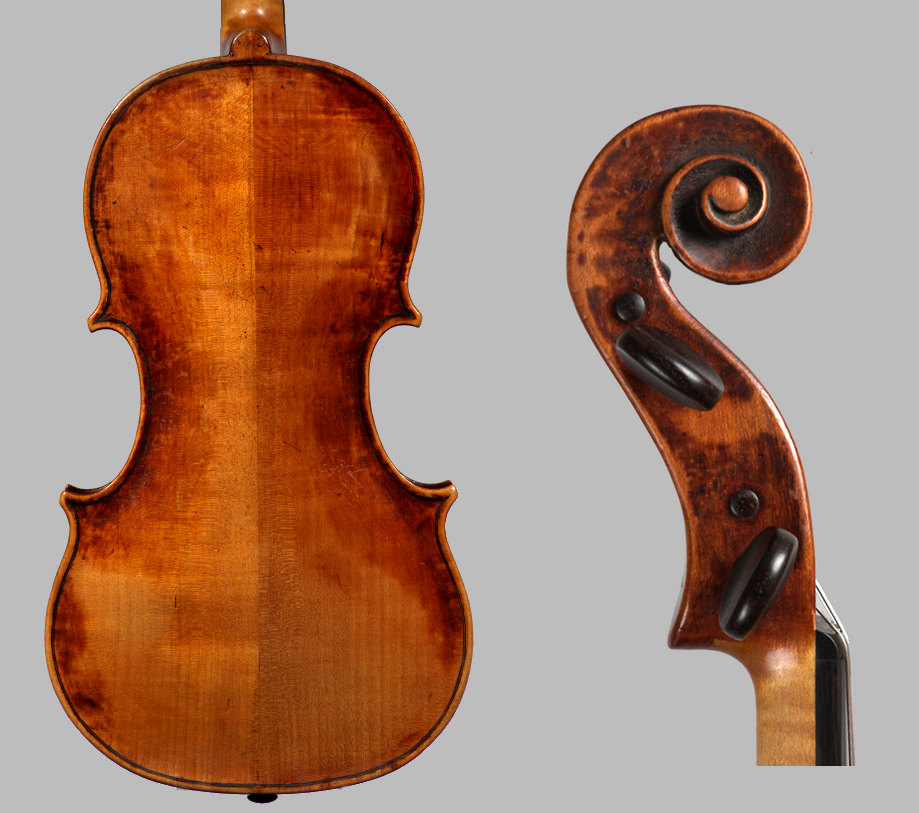
An early work of Giovanni Grancino I, probably c. 1680. The style of the model is remarkably similar to the brothers’ violas. Photos: courtesy Carlo Chiesa
There is no doubt that the Grancino workshop was the main center for violin making in Milan, and that other makers learned the art there, the most influential for the future being Carlo Giuseppe Testore, founder and arguably the best maker of the next important family of luthiers in Milan.
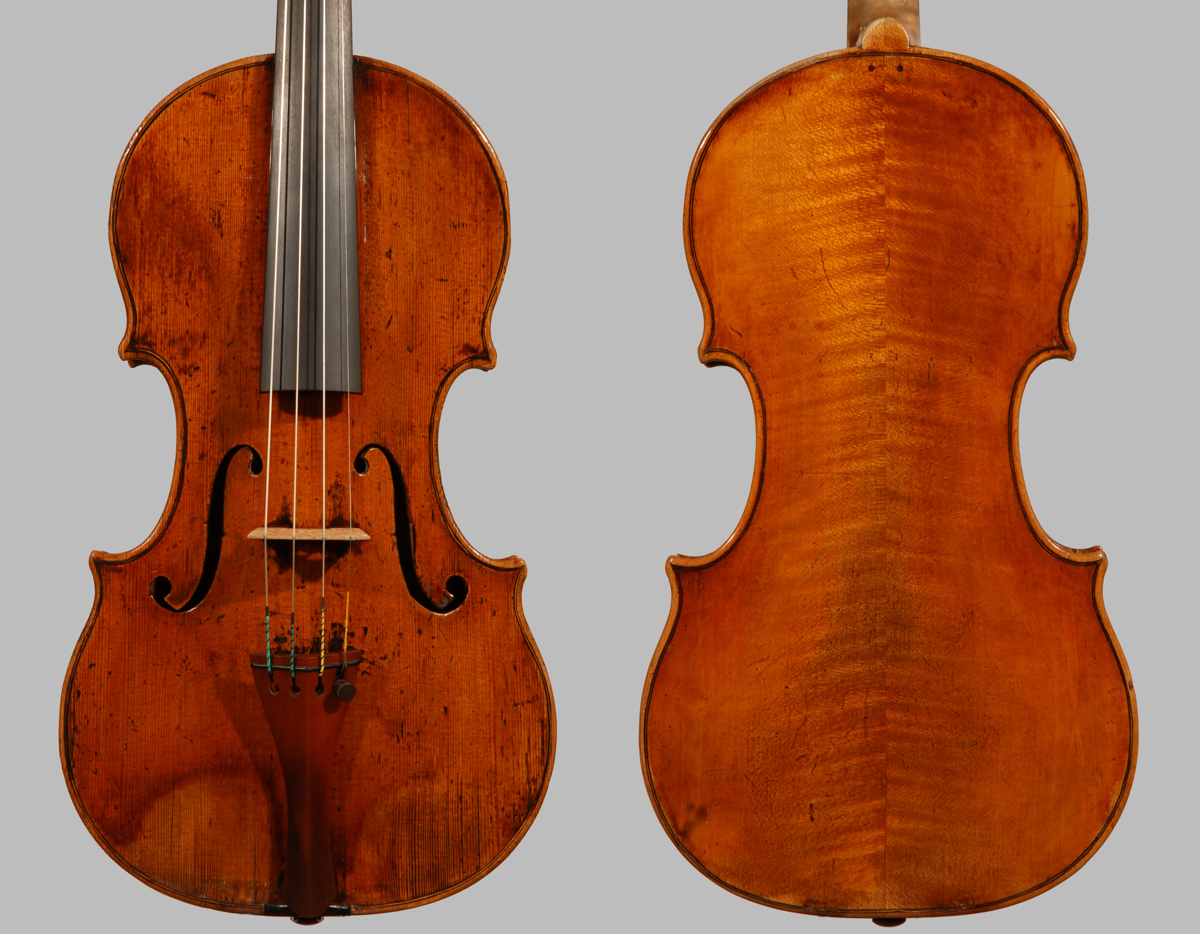
Violin by Giovanni Grancino, c. 1695. By the end of the century Giovanni was retaining the character of his own style while inserting more Cremonese-like features, probably for commercial reasons. Photos: courtesy Carlo Chiesa
Giovanni’s most important and probably finest pupil, however, was his son Giovanni Battista. Born in Contrada Larga in 1673, Giovanni Battista had surely become a dependable assistant for his father by the turn of the century and was probably the author of much of what came out of the workshop. We must remember that as a rule the label in an instrument gave the name of the owner of the workshop, so the output of the Grancinos continued to be labeled in the father’s name while Giovanni Battista increasingly gained responsibility for the production. The years around 1700 were possibly the pinnacle of the Grancinos’ success, with father and son working side by side producing a substantial output.
Instruments from this period sometimes show a growing Amati influence in both the outline and the arching: it is probably more correct to say that the Grancinos were by then faithfully imitating the main characteristics of the Cremonese style, while retaining some original features of their own style. Their instruments concede nothing or very little to Stradivari’s growing influence in Cremona.
An important part of the Grancinos’ time was spent in cello making: these cellos were usually of a large size and have mainly been cut down in length and sometimes also in width, but their beauty and tone quality rank them as first-class instruments, while some are real masterpieces.
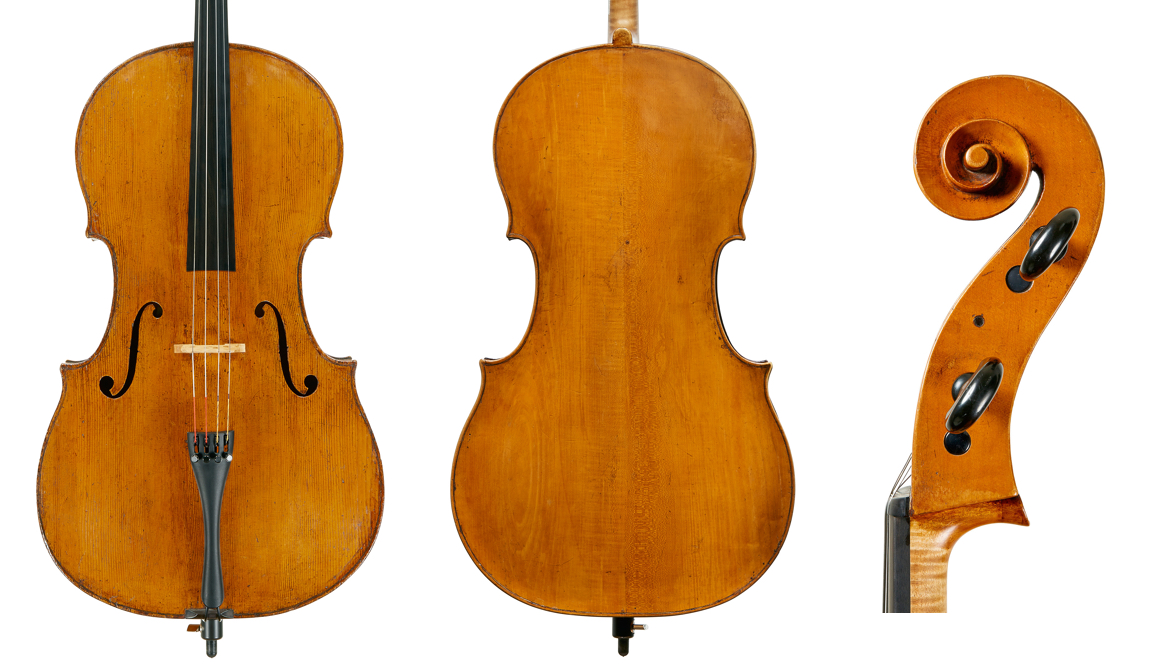
Cello by Giovanni Grancino, probably made with the assistance of Giovanni Battista. Photos: Tarisio
More photosIn 1694 Giovanni Battista had married a woman named Laura Gualina, and the couple remained living in the family house that adjoined the workshop on the Contrada Larga. Two children were born to them in 1698 and 1700, named Michel Angelo and Francesco respectively, and they were perhaps involved in violin making later in the century. By the turn of the century the Grancinos were by far the best makers around and it seems likely that they looked forward to a successful future, given their dominance of the local market for instruments, with Giovanni heading towards old age and the prospect of a comfortable retirement.
But a tragedy was soon to come. The relationship between Milan’s violin makers was not always peaceful: the few documents available show, for instance, that in 1703 bitter quarrels arose following the admittance into the guild of a man who supposedly had not followed a proper apprenticeship, and there is no doubt that this was just one of many problems in a small community where there was not enough demand to give all its members a secure living.
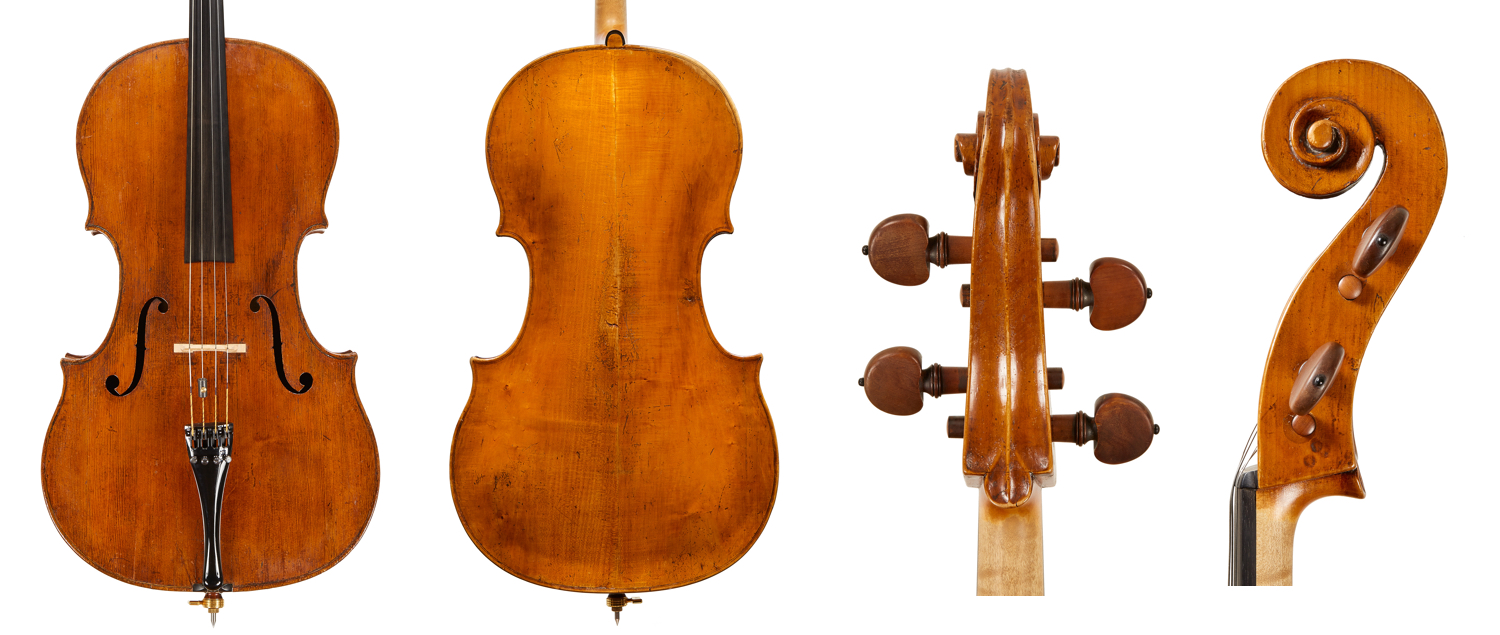
Grancino cello dated c. 1705, similar to the one shown above but reduced in the lower bouts. Photos: Tarisio
More photosA much worse event followed five years later. In the autumn of 1708 Antonio Maria Lavazza, a gifted violin maker about ten years younger than Giovanni Battista Grancino who also lived and worked on the Contrada Larga, started to have disagreements with Giovanni Battista. We do not know what these were about, but the situation deteriorated to the point that Lavazza stabbed Grancino with a sword. Giovanni Battista was severely injured and of course denounced his rival. Lavazza was forbidden to go near the Grancino workshop while the authorities were considering the case, but breaking this ban Lavazza visited his colleague’s place and found him there, his leg injured. According to Grancino’s later declaration, Lavazza attacked him again, but this time it was Grancino who stabbed Lavazza. Lavazza was wounded and died two days later.
This time it was Giovanni Battista’s turn to be prosecuted. To avoid jail, he immediately fled, but a trial soon followed and he was sentenced to death in his absence. Sadly, while the trial was proceeding in 1709 Giovanni Grancino died. After his death the family properties were inherited by Giovanni Battista and subsequently confiscated. This included the house and workshop, forcing Giovanni’s widow, Giovanni Battista’s wife and all their children to leave the family home. Giovanni Battista’s wife asked permission to remain in the house and pay rent in order to keep the workshop going. She stated that Michel Angelo and Francesco were taking on the business, but this must have looked like a ruse to help Giovanni Battista, since the elder of the two boys was only ten years old. In the end, they all moved to a small apartment not far away; the house was sold by the court in 1715 and the Grancinos were never to get it back.
There is little doubt that during his long period in hiding Giovanni Battista made some instruments to be able to support his family
There is little doubt that during his long period in hiding Giovanni Battista made some instruments to be able to support his family, and this probably explains the sudden fall in quality of the workmanship and particularly the varnish of his instruments. Some time after 1716 he obtained a pardon (an act of grace) and returned to join his family as a free man, but by then he was ruined: the old family workshop was no more in his possession, his name was disgraced and the family fortune was gone. Labels dated after 1708 are difficult to find: perhaps he avoided signing his instruments, or it’s possible that demand for his instruments had become very limited. He was also facing competition from his former assistant, Carlo Giuseppe Testore, who was at that time at the peak of his career.
We do not know where and when Giovanni Battista died. It was probably in the 1720s in the area surrounding the Contrada Larga (although not in the Contrada Larga itself, as the Grancino family never returned there). Some have suggested that the Grancino workshop was taken over by Ferdinando Alberti, because Alberti wrote on his label that he worked ‘at the Sign of the Crown’, the same sign the Grancinos used for many years, but a connection between Grancino and Alberti has yet to be found. He may simply have made use of an attractive shop sign that at the time he started working had been abandoned for years.
Carlo Chiesa is one of the world’s foremost experts on golden era Italian violin making. He co-wrote ‘The Stradivari Legacy’ with Duane Rosengard and was also a co-author of ‘Guarneri del Gesu’.
Notes
[1] W.E. Hill, A.F. Hill, A.E. Hill, The Violin Makers of the Guarneri Family, London, 1931, p. 19.
[2] Cozio di Salabue, Carteggio, Milan, 1950, p. 19.
[3] Laurent Grillet, Les Ancêtres du Violon, C. Schmid, Paris, 1901.
